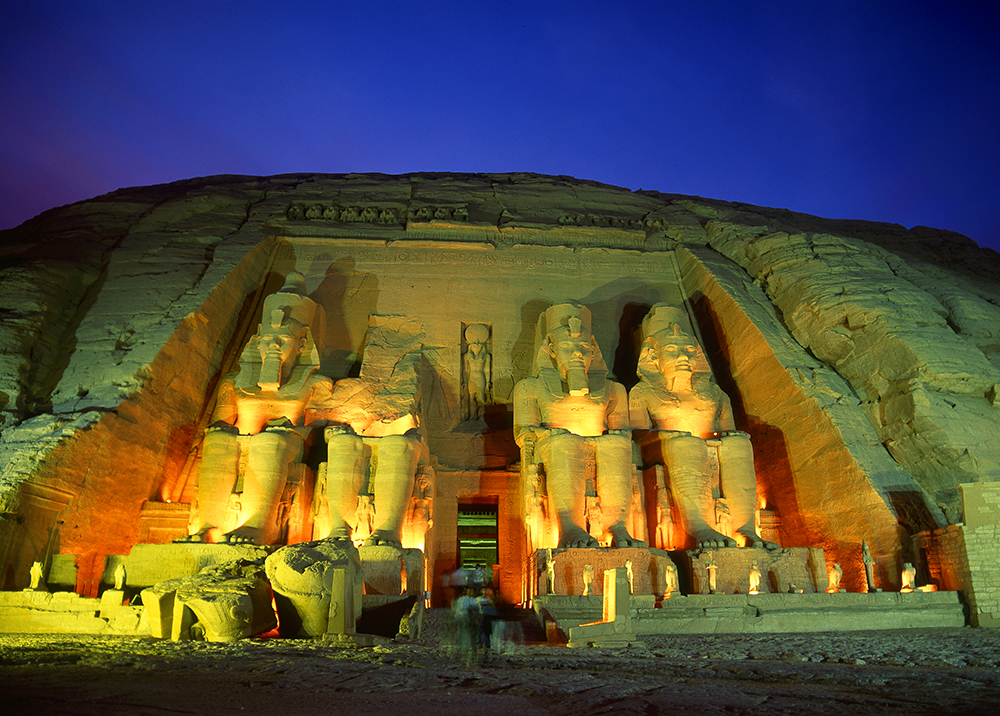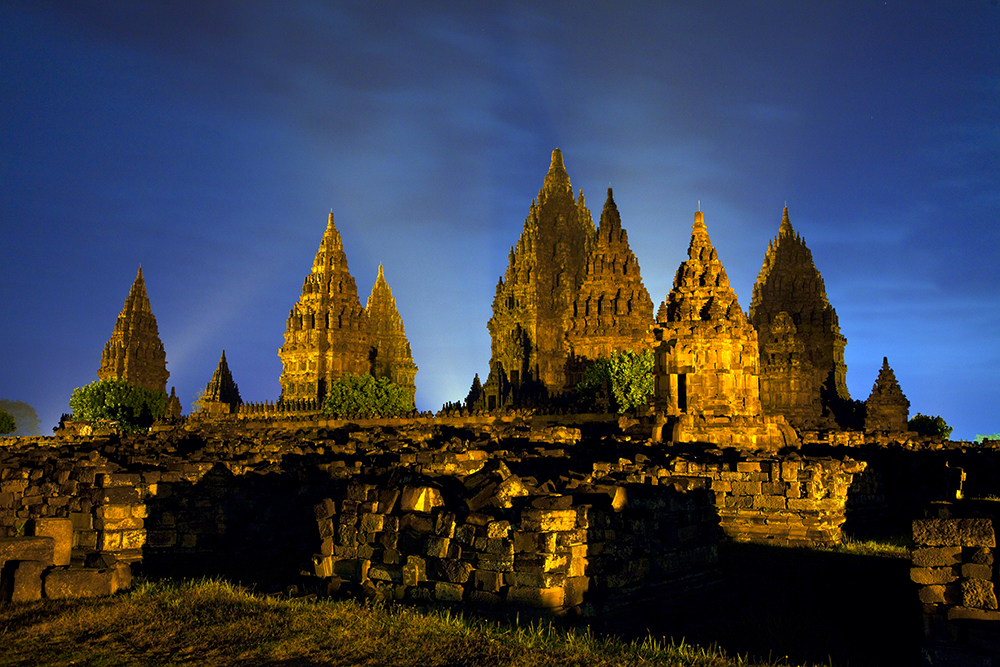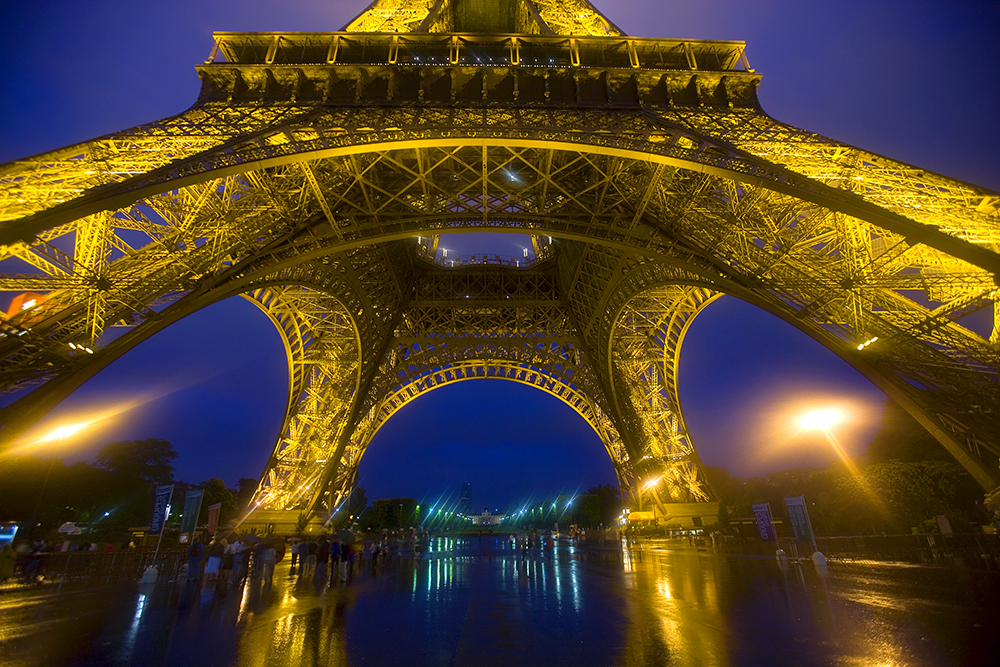Architecture is one of the subjects photographers love to shoot at home and abroad. Even if your passion is shooting landscapes, wildlife, or people, it’s hard not to get excited by a stunning work of architecture. From impressive city skylines like New York and Philadelphia to the Natural History Museum in London, and from the interior of a Buddhist temple in Thailand to a Bavarian castle in Germany and Byzantine ruins in Turkey, architecture is awe inspiring, it is art in the form of stone, steel, wood and glass, it is often a glimpse into our past, and it is so varied throughout the world that it is endlessly intriguing.
 Architecture looks good in many types of lighting. However, there is something especially mysterious, beautiful, and even magical when you take pictures of it at twilight. Even though night photography can produce beautiful images, my favorite time to photograph buildings, bridges, and cityscapes is just before dark when the sky turns cobalt blue. The mixture of the artificial lights with the deep blue color of the sky is stunning.
Architecture looks good in many types of lighting. However, there is something especially mysterious, beautiful, and even magical when you take pictures of it at twilight. Even though night photography can produce beautiful images, my favorite time to photograph buildings, bridges, and cityscapes is just before dark when the sky turns cobalt blue. The mixture of the artificial lights with the deep blue color of the sky is stunning.
 There is a difference between shooting a dusk and twilight. Dusk is after sunset but the sky hasn’t become dark enough for the maximum contrast and drama of twilight. At this time the sky often has colorful clouds or a glow at the western horizon. You can often take nice shots with this type of light, but this isn’t the magic of twilight.
There is a difference between shooting a dusk and twilight. Dusk is after sunset but the sky hasn’t become dark enough for the maximum contrast and drama of twilight. At this time the sky often has colorful clouds or a glow at the western horizon. You can often take nice shots with this type of light, but this isn’t the magic of twilight.
 What is interesting about twilight photography is that the saturated dark blue color of the sky is not a function of a clear sky. You will get the same intense color if the sky is overcast or even if it’s raining. The color is entirely dependent on the time of evening (or the time at dawn) when you take the pictures, not the weather.
What is interesting about twilight photography is that the saturated dark blue color of the sky is not a function of a clear sky. You will get the same intense color if the sky is overcast or even if it’s raining. The color is entirely dependent on the time of evening (or the time at dawn) when you take the pictures, not the weather.
White balance
I usually shoot twilight photography on daylight white balance. This produces the golden lighting from the artificial light sources that looks so good against the cobalt sky. Sometimes I will experiment with a tungsten white balance, and that creates a rich blue cast to the images. If you shoot in RAW mode as you should be doing, you can tweak the color after-the-fact in post-processing. So, if daylight WB produces images that are too yellowish, for example, you can simply move the temperature slider in Adobe Camera Raw or Lightroom until you like what you see.
 I only use auto white balance when I shoot florescent or mercury vapor lights. AWB does a great job in rendering these types of lights with a correct color balance. If you photographed twilight or night scenes in the past with film, you’ll notice that the florescent and mercury vapor lights had a pronounced blue-green color bias. Digital cameras have taken care of that problem.
I only use auto white balance when I shoot florescent or mercury vapor lights. AWB does a great job in rendering these types of lights with a correct color balance. If you photographed twilight or night scenes in the past with film, you’ll notice that the florescent and mercury vapor lights had a pronounced blue-green color bias. Digital cameras have taken care of that problem.
Exposure
In a large majority of your twilight exposures, the in-camera meter isn’t trustworthy to give you accurate exposures. The reason is because meters are programmed to understand middle tones (Ansel Adams called this Zone V). Meters don’t know what to do with extremes like brilliant highlights and dark shadows in the same composition. When you shoot at twilight, you have both – the brilliant lights of the city juxtaposed with the very dark tones of the sky, dark bodies of water, and black shadows. At best, the meter can average those values and try to come up with some kind of compromise that may or may not be correct.
 If you want to shoot a brick wall at night that’s fairly evenly illuminated, then sure, the meter will do well. But if you have a picture of a castle with spot lights on it with a dark, cobalt blue sky in the background, the bright spotlights are many f/stops lighter than the backdrop and the meter can’t know what the proper exposure value should be. When you include traffic lights in the composition, the blindingly bright headlights of cars in contrast with very dark shadows makes the problem even more acute. No light meter, hand-held or built-into the camera, can effectively deal with this kind of lighting situation and produce an accurate exposure.
If you want to shoot a brick wall at night that’s fairly evenly illuminated, then sure, the meter will do well. But if you have a picture of a castle with spot lights on it with a dark, cobalt blue sky in the background, the bright spotlights are many f/stops lighter than the backdrop and the meter can’t know what the proper exposure value should be. When you include traffic lights in the composition, the blindingly bright headlights of cars in contrast with very dark shadows makes the problem even more acute. No light meter, hand-held or built-into the camera, can effectively deal with this kind of lighting situation and produce an accurate exposure.
 If you can’t rely on the meter, how then do you arrive at a proper exposure when shooting at twilight? There are two easy ways to do it:
If you can’t rely on the meter, how then do you arrive at a proper exposure when shooting at twilight? There are two easy ways to do it:
1. You can use a formula for a good twilight exposure that is based on experience. This is what I did when I shot film. The exposure I would use most of the time was f/8 at 8 seconds when using 100 ISO. If you use this exposure for most twilight photos, you will be pleased with the results much of the time. Of course, if you want more depth of field or a longer shutter speed (to blur movement, for example), you can simply extrapolate the numbers. For example, f/16 at 32 seconds using 100 ISO will produce the exact same exposure as f/8 at 8 seconds. If you are using 200 ISO, instead of f/8 at 8 seconds, you would use f/8 at 4 seconds.
2. You can take a shot, look at the results on the LCD monitor on the back of your camera, and if the image is too light or too dark, you can tweak the exposure using the exposure compensation feature on the camera. I do this all the time now and it works perfectly. There’s no guesswork. If you don’t know where the exposure compensation feature is on the camera, read the manual and find out. It’s one of the most important functions you have at your disposal.
Jim Zuckerman has been a photography educator for 40 years. You can see more of his work, as well as a listing of his ebooks, webinars, and photo tours at jimzuckerman.com.